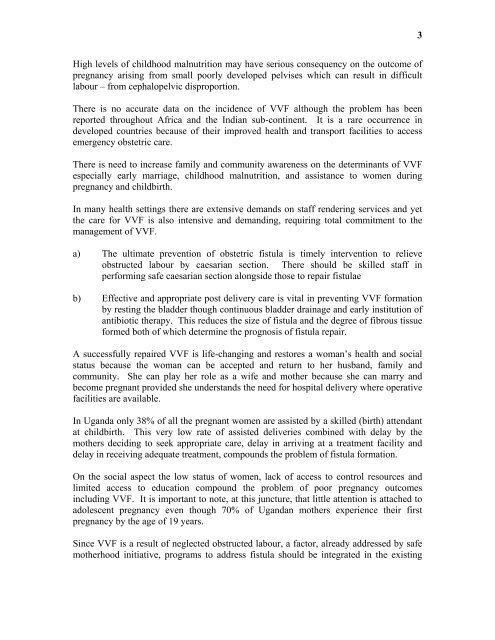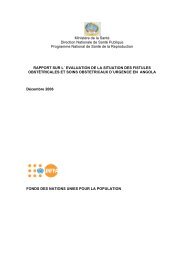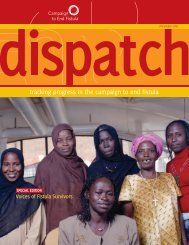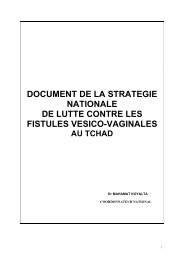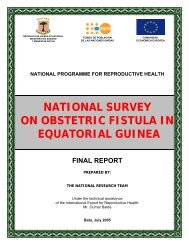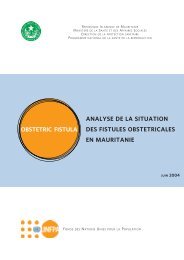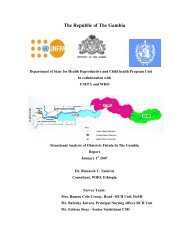Uganda - Campaign to End Fistula
Uganda - Campaign to End Fistula
Uganda - Campaign to End Fistula
- No tags were found...
Create successful ePaper yourself
Turn your PDF publications into a flip-book with our unique Google optimized e-Paper software.
3High levels of childhood malnutrition may have serious consequency on the outcome ofpregnancy arising from small poorly developed pelvises which can result in difficultlabour – from cephalopelvic disproportion.There is no accurate data on the incidence of VVF although the problem has beenreported throughout Africa and the Indian sub-continent. It is a rare occurrence indeveloped countries because of their improved health and transport facilities <strong>to</strong> accessemergency obstetric care.There is need <strong>to</strong> increase family and community awareness on the determinants of VVFespecially early marriage, childhood malnutrition, and assistance <strong>to</strong> women duringpregnancy and childbirth.In many health settings there are extensive demands on staff rendering services and yetthe care for VVF is also intensive and demanding, requiring <strong>to</strong>tal commitment <strong>to</strong> themanagement of VVF.a) The ultimate prevention of obstetric fistula is timely intervention <strong>to</strong> relieveobstructed labour by caesarian section. There should be skilled staff inperforming safe caesarian section alongside those <strong>to</strong> repair fistulaeb) Effective and appropriate post delivery care is vital in preventing VVF formationby resting the bladder though continuous bladder drainage and early institution ofantibiotic therapy. This reduces the size of fistula and the degree of fibrous tissueformed both of which determine the prognosis of fistula repair.A successfully repaired VVF is life-changing and res<strong>to</strong>res a woman’s health and socialstatus because the woman can be accepted and return <strong>to</strong> her husband, family andcommunity. She can play her role as a wife and mother because she can marry andbecome pregnant provided she understands the need for hospital delivery where operativefacilities are available.In <strong>Uganda</strong> only 38% of all the pregnant women are assisted by a skilled (birth) attendantat childbirth. This very low rate of assisted deliveries combined with delay by themothers deciding <strong>to</strong> seek appropriate care, delay in arriving at a treatment facility anddelay in receiving adequate treatment, compounds the problem of fistula formation.On the social aspect the low status of women, lack of access <strong>to</strong> control resources andlimited access <strong>to</strong> education compound the problem of poor pregnancy outcomesincluding VVF. It is important <strong>to</strong> note, at this juncture, that little attention is attached <strong>to</strong>adolescent pregnancy even though 70% of <strong>Uganda</strong>n mothers experience their firstpregnancy by the age of 19 years.Since VVF is a result of neglected obstructed labour, a fac<strong>to</strong>r, already addressed by safemotherhood initiative, programs <strong>to</strong> address fistula should be integrated in the existing


